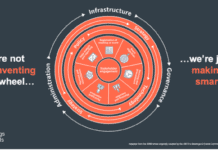 There has been a great deal of hype around the topic of Strategic Meetings Management (SMM) and big data.
There has been a great deal of hype around the topic of Strategic Meetings Management (SMM) and big data.
By now, you have probably read numerous articles or guides urging you to “harness the power of big data” or emphatically asking “what is your big data strategy?” While there is a need to educate the industry on the subject, it isn’t helpful to put it in such terms because it reduces big data to the fear of missing out on a technology.
It is also worth noting that strategic meetings planners have been using data for a long time. So, it is not about whether the data is voluminous or not, but rather what you’re doing with it now that wasn’t possible before. Another important reason for discussing this topic is that smartphones are changing the way attendees experience events. With this advancement in mobile technology, event attendees are leaving an extensive trail of digital breadcrumbs that reveals their behavior, interest, engagement and preferences. It also allows planners to communicate instantaneously with attendees before, during and after an event.
As a result, event technology can now effectively leverage data to enhance your strategic meeting management programs in four integral ways: turning event intelligence into actionable insights, measuring event ROI and cost savings, personalizing and curating event experience, and streamlining operations and communications throughout the event cycle. The first part of this two-part series discusses how meeting planners can centralize data before, during and after the event.
Removing Silos, Centralizing Data & Connecting the Dots
There is an abundance of data that can be collected throughout the event cycle. In this day and age, the biggest pain point in most organizations is not collecting the data but the potential issue of creating data silos. Silos arise when one department has control and responsibility over one particular set of data and is not sharing or cannot share it with the rest of the organization because of organizational or technological limitations. SMM platforms such as Cendyn’s Metron were designed to address that issue. Here are some examples of data points that can be centralized and assembled to build your events and meetings history:
Before the Event
Travel Data:
- Room rates
- Airline tickets
- Corporate travel policy compliance
- Attendee registration data
- Job title
- Experience level
- Industry
Pre-Event Survey:
- Reason for attending
- Areas of interest
- Budgets
- Buying intent
- Number of events attended
During the Event
Meeting Credit Card Spend:
- Expenses that have arisen during events
- Add-on Food & Beverage
RFID Chips or Use of Beacon Technology:
- Specific sessions attended
- Length of time attendees stayed at the sessions
- Number of exhibitors visited via heat maps
Session Evaluations/Qualitative Data:
- Speakers
- Topics
- Presentation formats
After the Event
Post-Event Satisfaction Surveys:
- Questionnaire: Were attendee’s/exhibitor’s business needs fulfilled?
Full compliance reporting
Across the Event Cycle
Event Spend History
Email Marketing:
- Emails opened, clicked
Web:
- Page(s) visited
- Goal completions
Once the data is centralized, the next step consists of building comprehensive attendee, event and exhibitor profiles. Centralizing and compiling the data results in the creation of business/event intelligence that can be used to plan even smarter events going forward. Reporting is also a critical component of SMM, and good data means accurate reporting.
Check out the second part of this series to find out how you can turn your event intelligence into actionable insights that can help streamline operations and communication through the event cycle.
Christophe has more than 15 years of experience in the travel industry, and is a travel and marketing technology advocate. He joined Cendyn/ONE in 2015 to share his knowledge of how Cendyn/One’s fully- integrated Hotel CRM + Digital Marketing Platform increases guest satisfaction.










